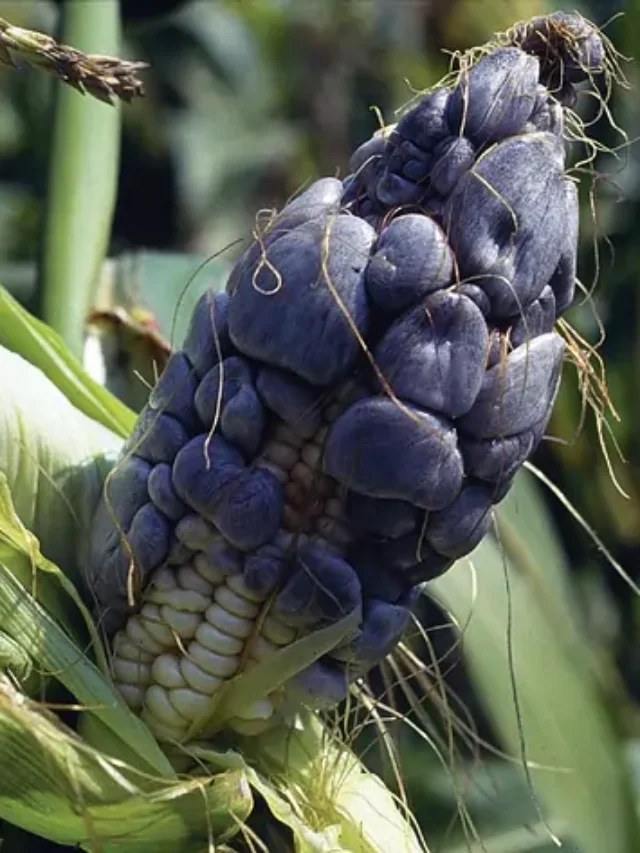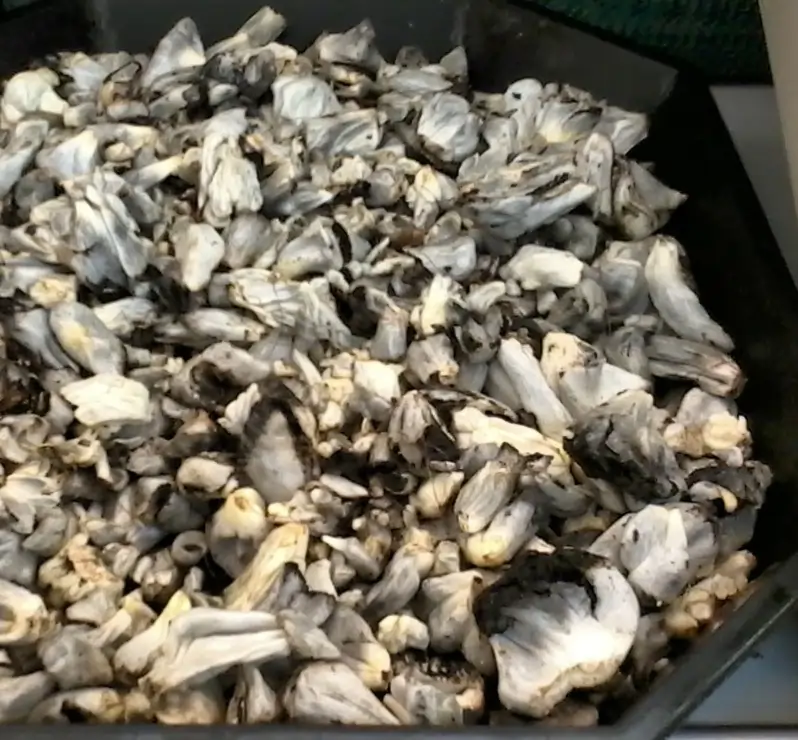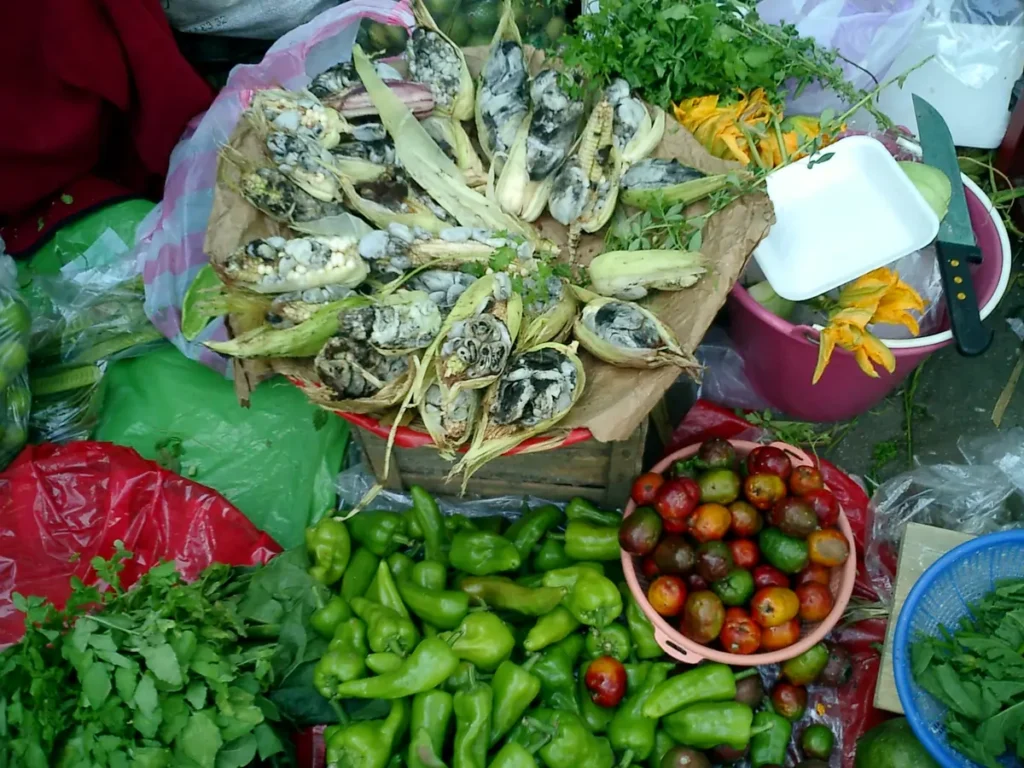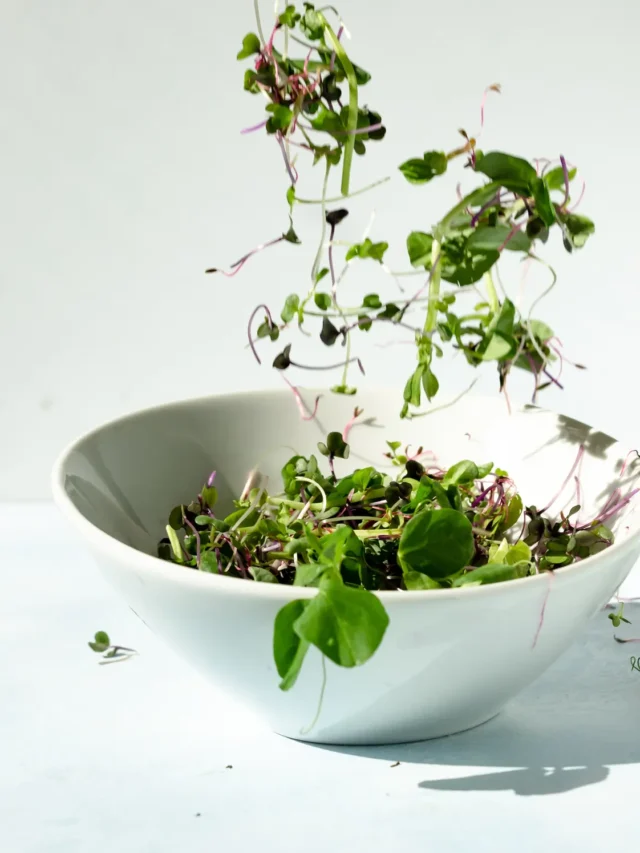Huitlacoche, A Surprising Delicacy of The Devil’s Corn
Table of Contents
In the world of unique cuisines, a novel fungus transforms ordinary corn into a coveted ingredient: the grey fulvous fungus known as ‘Huitlacoche’ or ‘Mexican truffle.’ Once feared as the ‘devil’s corn’ by American farmers due to its virulent nature, this fungus has now been transformed into a sought-after delicacy. Let’s delve deeper into the cultural and economic significance of this fascinating journey.
Huitlacoche’s Delicacy Rooted in History

The appreciation of Huitlacoche dates back to the Aztec era in Mexico. It’s traditionally savored in various local dishes, a fact that remained relatively unnoticed in the global culinary scene until recently. Now, even Michelin-star restaurants in the United States are incorporating it into their menus. This surge in popularity has led to a dramatic increase in its market value, with the export price of Huitlacoche doubling in just four years.
Photo by CIMMYT Images at Fliker
A Boon for Mexican Farmers
The growing popularity of this fungus has opened up a significant income-generating avenue for Mexican farmers. In this market, infected corn often costs up to 40 times more than conventional corn.
Some farmers have been able to use their expertise to capitalize on this trend by adjusting their practices accordingly. For maximum market value, Huitlacoche must be harvested at the right stage, when it has progressed from a pale yellow color to a gray hue and has a smooth texture.

The Science Behind Cultivation Huitlacoche
Recent advancements in technology have enabled farmers to infect crops year-round. By collaborating with scientists, farmers have developed methods to produce the fungus in all seasons. This involves isolating the fungus and injecting it directly into the corn. Temperature control plays a key role in this process, as extreme conditions could render the injection ineffective or even kill the fungus.
Challenges and Adaptation

Despite its high market value, cultivating Huitlacoche requires a delicate balance. The fungus does not preserve well without refrigeration and only remains fresh for a few days. This necessitates rapid transportation to markets, maintaining the optimal conditions required for freshness. Some producers are canning Huitlacoche to expand its shelf life and accessibility, but connoisseurs still prefer the freshness of the fresh product.
Huitlacoche in the Culinary World
In Mexico, Huitlacoche is sold at markets like Santarita in Guapa for 20 to 50 pesos per kilogram and is favored for its traditional dishes. Internationally, it has become a high-end ingredient commonly featured on menus in restaurants like San Francisco’s Aito. However, due to its limited availability and short shelf life, the cost is elevated abroad. In the United States, for instance, the price has more than doubled since 2020. Still, chefs and food enthusiasts remain eager to explore the flavors of this ‘Mexican truffle’.
Economic and Ecological Considerations of Huitlacoche
The rise of hybrid crops and pesticides has made naturally occurring Huitlacoche rare, leading to a more competitive market. While large-scale production meets international demand, it also makes the delicacy more accessible to locals, potentially affecting its rarity and value.

Conclusion:
Huitlacoche’s journey from a feared crop infestation to a culinary treasure highlights the evolving perceptions of food and agriculture. Its growing popularity reflects a deepening appreciation for traditional and unique flavors, bridging local customs and global gourmet trends.
Interested to learn about healthy food options?
Check out our series of healthy food options that you can easily grow at your home at a very low cost. The Microgreens


